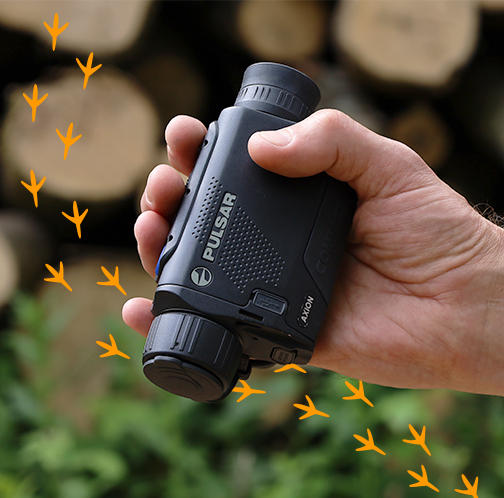High-End Performance at Entry Level Prices: Taking a Look Back at the Pulsar Axion Series
From new technologies to a more affordable price tag, with release of the new Pulsar Axion Compact range, we’ve taken a look back at where the Axion series first began and how far the series has come in the six years since its inception.
2019
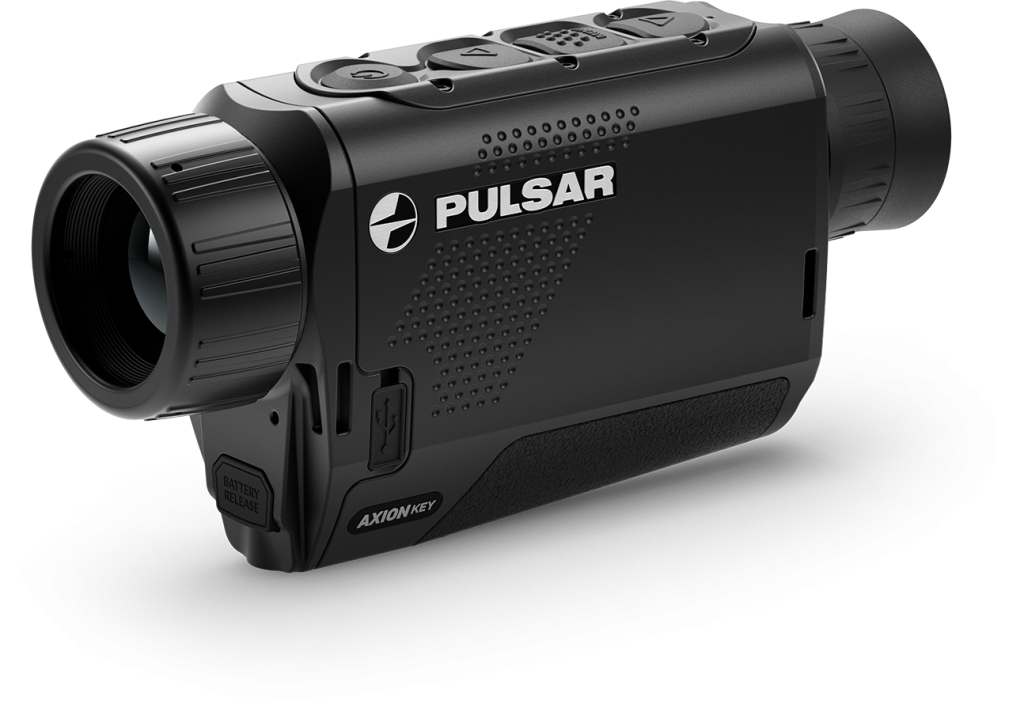
Pulsar Introduces the Axion Series
The inaugural Axion Key XM30 was launched in 2019, succeeding the Quantum Lite and offering a much smaller footprint, a more ergonomic design, and bringing premium Pulsar quality thermal performance to handheld devices, with an improved price point to boot.
A 320×240, 12µm thermal sensor and 30mm f1.2 objective lens achieved a 1200m detection range and a 7.3° field of view.
When the Axion Key XM30 was launched, the focus was on its value for money and its ability to offer a powerful performance with impressive image quality relative to its smaller bodyshell.
The technology of the time was not as advanced as it is now, in 2025, which meant that several features that you may have come to expect from current Pulsar devices were not included. This meant no video recording capabilities, no Wi-Fi, and a smaller display.
The Axion Key XM30 was introduced with an SRP of £1,159.95.
2020

Addition of the Axion Key XM22 & Introduction of the Axion XM30S
Building on the Axion Key XM30’s popularity, Pulsar moved on to release the Axion XM30S & Axion Key XM22 in early 2020, with the latter becoming the cheapest Axion in the range (launched with an SRP of £869.95).
The Axion XM30S offered a few upgrades from its predecessor, including a larger 1024×768 AMOLED display (compared to its predecessor’s 960×760 LCOS display, a 4.5-18x magnification range, and a new APS3 battery pack, which offered up to 4 hours of battery life. This model also came with more digital features, including video recording and photo capture capabilities, 16GB of built-in memory, and Wi-Fi capabilities to enable connection to the Stream Vision app.
Later in 2020
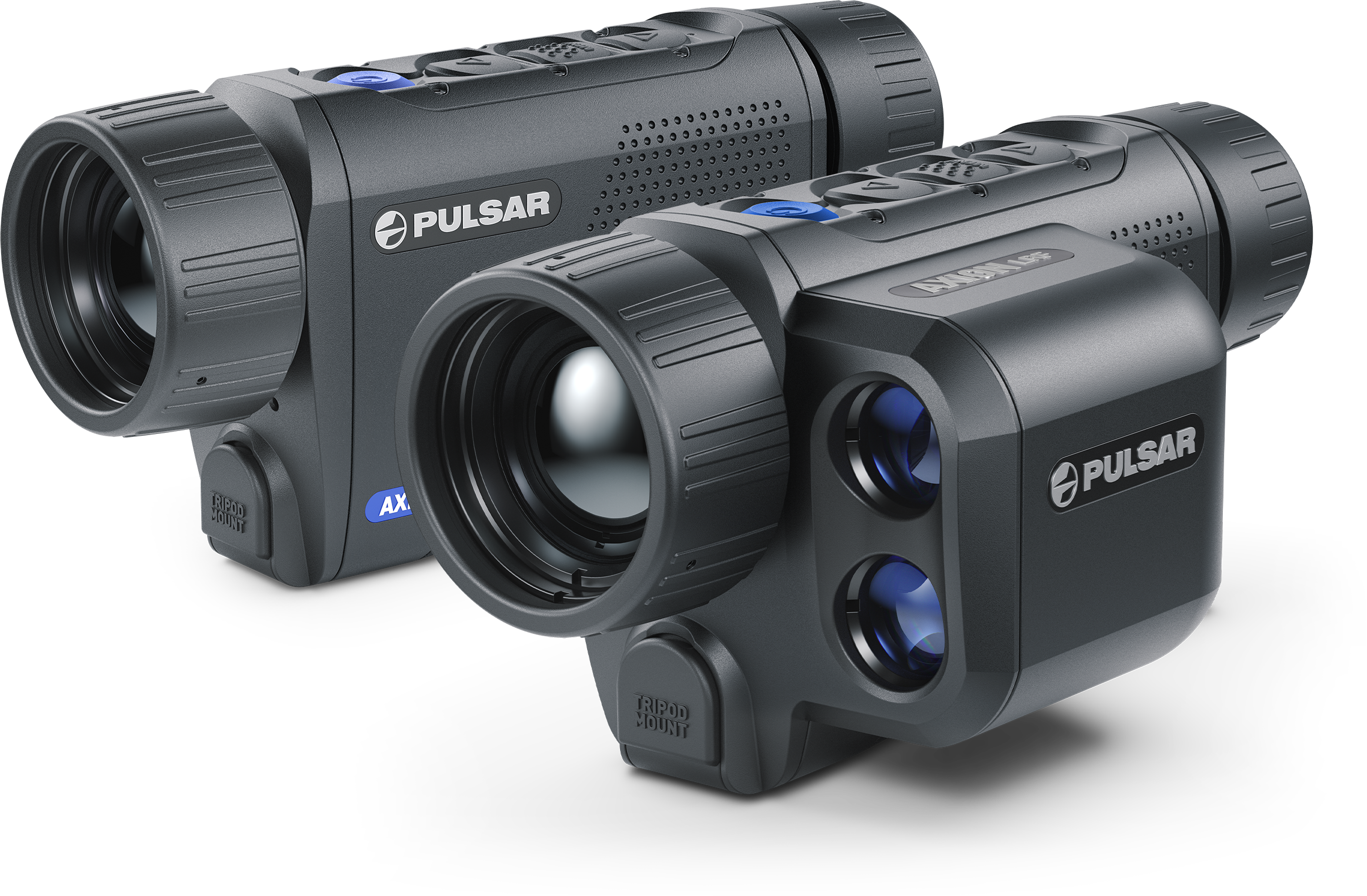
Addition of the Axion XQ38 Series
Later that same year, Pulsar released two new monoculars in the series: the Axion XQ38 and the Axion LRF XQ38 — the first Axion device to feature a built-in laser rangefinder (with a measuring distance of 1000m). Both devices retained the screen upgrade and digital features found in that year’s Axion XM30S model but included significant performance upgrades by way of a new 384, 17µm, <40mK NETD thermal sensor, a larger 38mm f1.0 objective lens, an extended 1350m detection range, and a wider 9.8° FOV.
Both XQ38 models were provided with an APS5 battery pack, extending the battery life from 4 hours to 5 hours. The Axion XQ38 was introduced with an SRP of £1,839.95 and the Axion LRF XQ38 was introduced with an SRP of £2,129.95.
Early 2022

Introduction of the Axion 2 Series
2022 brought the next step in the Axion series when Pulsar unveiled the Axion 2, with two new products — the Axion 2 XQ35 and Axion 2 LRF XQ35 — offering the features users had come to expect from the Axion series, along with an enhanced performance thanks to their 384×288, 17µm Lynred sensors, faster 35mm f1.0 objective lenses, and improved thermal sensitivity.
Each device offered a wider 10.7° FOV, a 1300m detection range, significantly extended 11 hour battery life, and 640×400 AMOLED displays.
Bringing the kind of performance previously expected from Pulsar’s higher-end products to a much smaller format, the Axion 2 XQ35 was introduced with an SRP of £1,549.95 and the Axion 2 LRF XQ35 was introduced with an SRP of £1,839.95.
Later in 2022
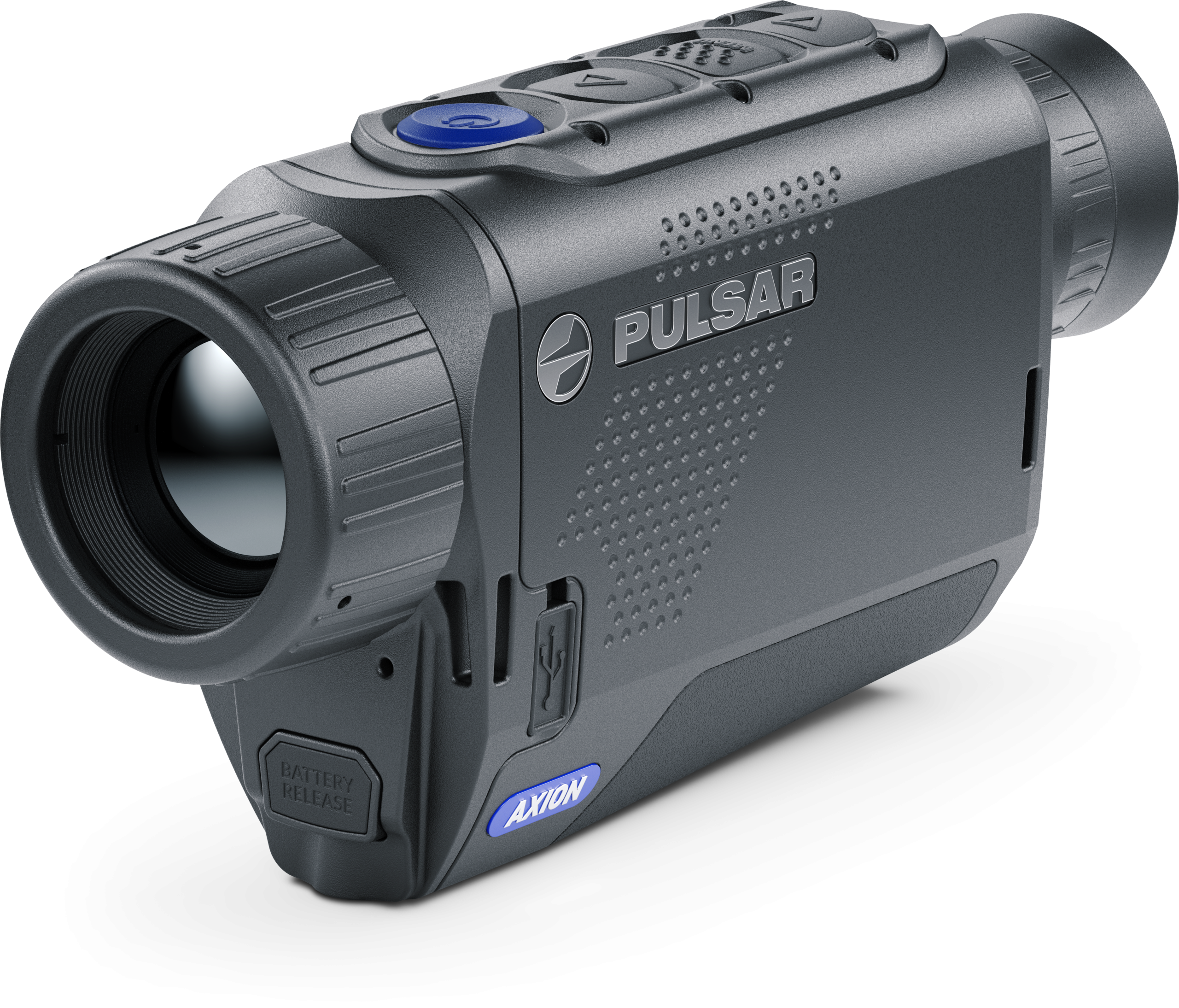
Introduction of the Axion XM30F
That same year, Pulsar released the Axion XM30F — with a difference in size of around 23mm compared to the XQ38, this device was a significantly smaller version of the Axion that still offered the impressive performance and digital capabilities of its predecessors.
A 320×240, 12µm thermal sensor provided a 1300 m detection range and enhanced battery life enabled up to 7 hours of operation, all from a device that was compact enough to fit in your pocket.
With Pulsar’s focus of offering high-end performance at low prices, the Axion XM30F was introduced with an SRP of £1,069.95.
Later in 2022
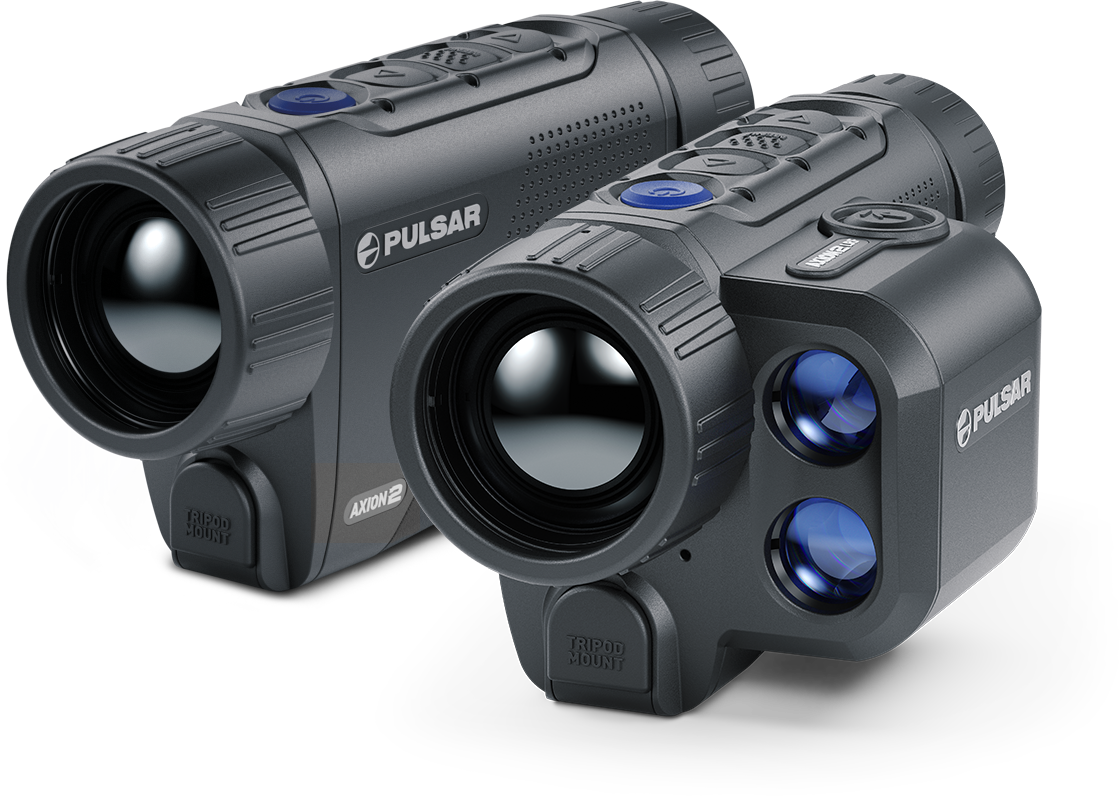
Introduction of the Axion 2 XG35 & Axion 2 LRF XG35 Models
Later again that year came the Axion 2 XG35 and its LRF-equipped counterpart, the Axion 2 LRF XG35. These devices were the first handheld device in the Pulsar product range to feature a more powerful 640×480, 12µm, <40 mK NETD thermal sensor. Combining this sensor with a fast aperture 35mm f1.0 objective lens meant these devices could achieve a detection range of up to 1750 m and a 12.5° FOV. A larger 1024×768 AMOLED display provided a clearer image that made thermal observation even more comfortable over long periods of observation.
The Axion 2 XG35 was introduced with an SRP of £2,339.95 and the Axion 2 LRF XG35 was introduced with an SRP of £2,629.95.
2023

Pro Models Added to the Axion Range
In 2023, Pulsar introduced the first Pro models to the Axion 2 series with the Axion 2 XQ35 Pro and the Axion 2 LRF XQ35 Pro.
Retaining the 384×288, 17µm thermal sensors, these two new models each featured a lower <25mK NETD rating, offering better thermal sensitivity — placing them, at the time, just below the high-end Telos XP50 models in terms of performance.
The Axion 2 XQ35 Pro was introduced with an SRP of £1,639.95 and the Axion 2 LRF XQ35 Pro came in at £1,929.95.
Later in 2023
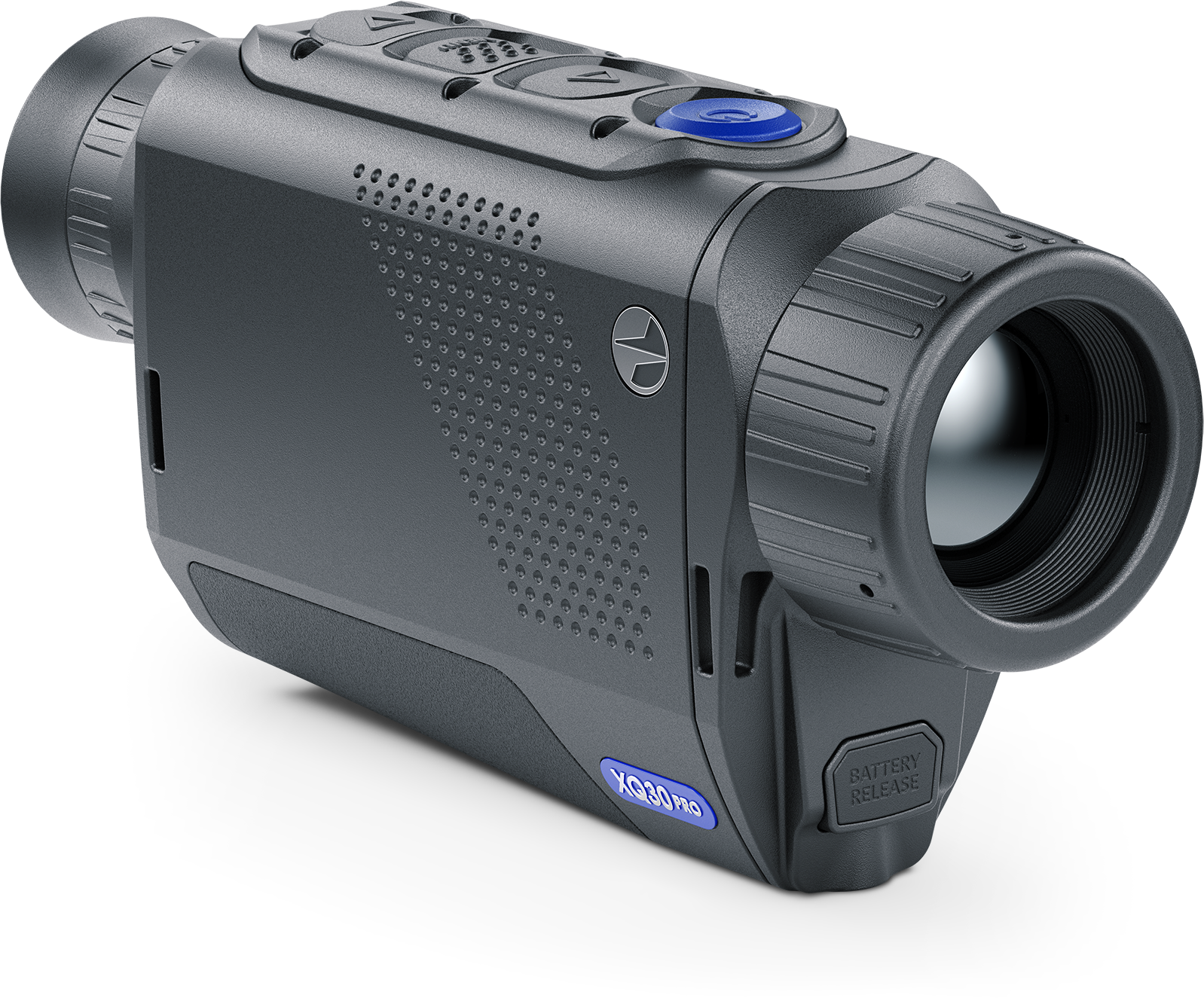
Axion XQ30 Pro Released
Later that same year saw the release of the Axion XQ30 Pro. With a 384×288, 17µm thermal sensor and a much smaller footprint, this device will achieve 1050 m detection range, and its <20mK NETD rating ensures even better thermal sensitivity than its predecessor.
Its compact and lightweight form factor meant this device would later be included as part of the Axion Compact series, which launched in 2024.
The Axion XQ30 Pro is available now for £1,079.95.
2024-2025
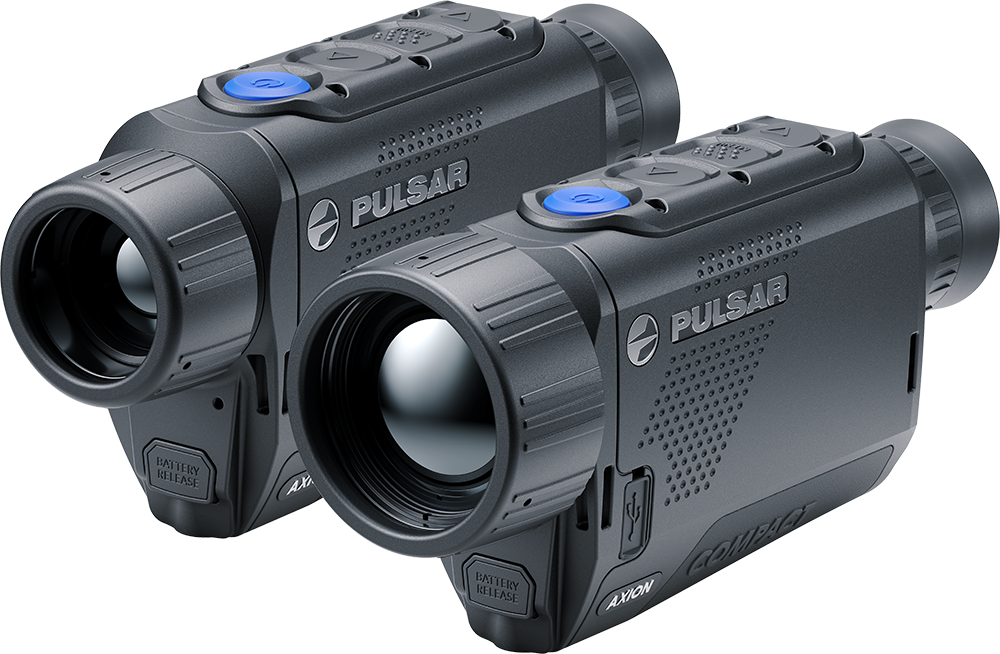
Introduction of the Axion Compact Series
The Axion Compact series set a new standard in the thermal imaging market, showcasing what Pulsar’s technology could achieve whilst remaining compact and lightweight. The series was launched with two new models: the Axion Compact XG30 and Axion Compact XG35.
Each device features a 640×480, 12µm sensor with outstanding thermal sensitivity (XG30: <25mK NETD, XG35: <25mK NETD), along with all the digital and connectivity options that have become a staple of Pulsar devices, including Stream Vision 2 connectivity, built-in video and still image capture, 9 colour palettes (including a new green colour palette), and much more.
The Axion Compact XG30 is available now for £1,399.95 and the Axion Compact XG35 is available for £1,579.95
2025

Addition of the NEW Axion Compact XQ19
That brings us to the latest addition to the Axion Compact range — the Axion Compact XQ19. When we look back to the early days of the Axion series and compare this new device with the Axion XQ38, you’ll see how far Pulsar has come in terms of performance, connectivity, and most of all, price.
A 384×288, 17µm, <18mK sNETD thermal sensor and a 19mm f1.0 objective lens achieves a detection range of 750 m and a 19.5° FOV (almost double that of the XQ38 and the widest in the current Axion Compact series).
This device is smaller than earlier models in every dimension, becoming the most pocket-sized device in the Pulsar product range. It is also considerably lighter, weighing in at 318g including the battery.
You’ll also notice a myriad features that weren’t readily accessible on earlier models, including:
- Widescreen display with customisable screen shapes
- 4x the storage space (now at 64GB compared to 16GB in earlier models)
- Fast aperture f1.0 lens
- 8 hours battery life
- 9 colour palettes
- Stream Vision 2 connection
- Ambidextrous strap anchors
- Integrated tripod mount (perfect for surveys)
At just £879.95, the Axion Compact XQ19 offers so much more for a fraction of the cost of the original.



